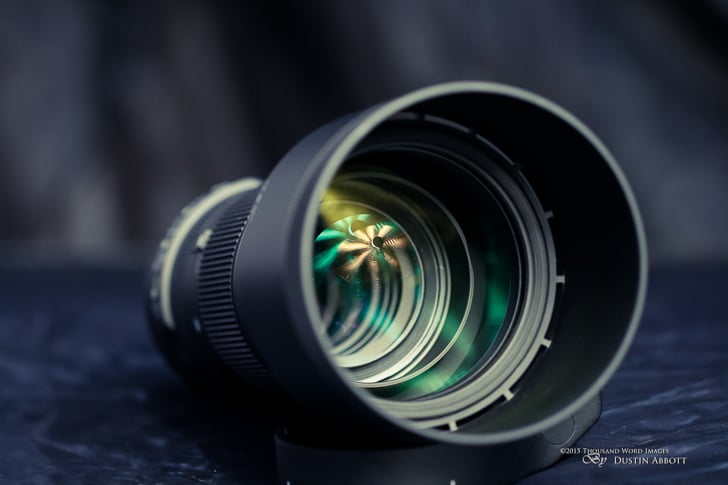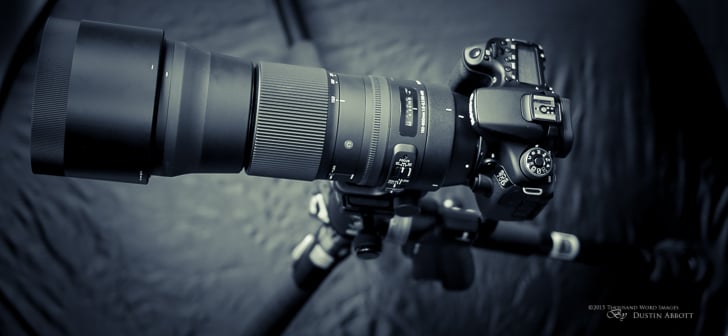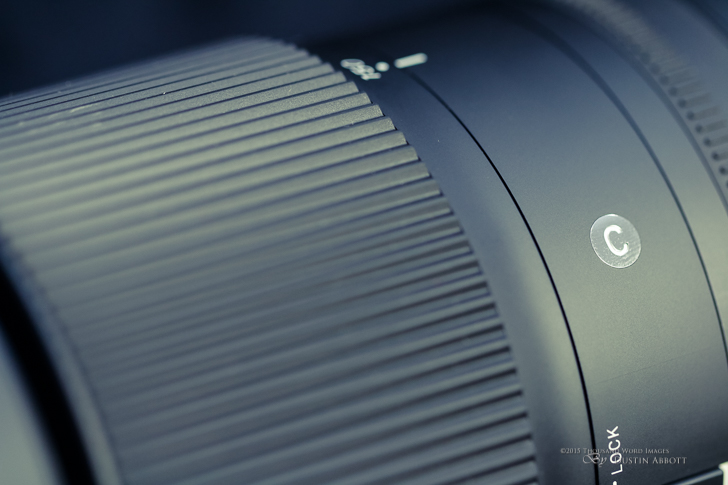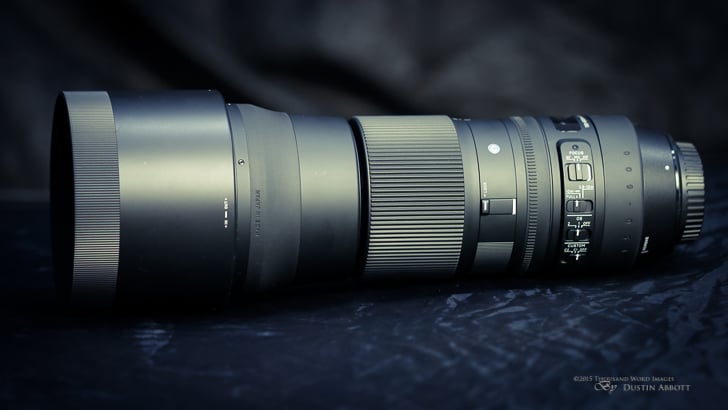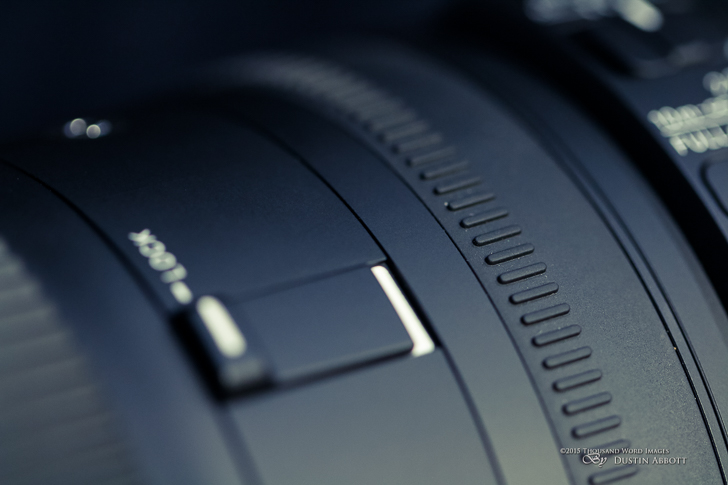Review – Sigma 150-600mm f/5-6.3 OS Contemporary
By: Dustin Abbott – WWW | Facebook | YouTube
Discuss the Sigma 150-600mm f/5-6.3 OS Contemporary
Sigma has definitely been on a roll. A few years ago they awoke from their third party slumber and realized that they were capable of making better products than what they were currently building. Clearly a decision was made to target a more premium place in the market, and so they scrapped their existing design philosophy entirely along with their marketing strategy. Whoever came up with their new “Global Vision” marketing strategy deserves a raise, and the team that came up with their new design ethos deserves an even bigger one. Few lenses get people around here as excited as the announcement of a new Sigma ART series lens. Sigma lenses still have their quirks (more on that in a moment), but they are building the handsomest lenses on the market. I have now reviewed lenses from all three categories of Sigma’s Global Strategy (Art, Sport, and Contemporary), and despite still not having a clue what “Contemporary” is supposed to mean in this context, I can attest that the cosmetic design and general construction of all of these lenses is excellent. This is true of the lens I am currently reviewing, the Sigma 150-600mm f/5-6.3 DG OS HSM Contemporary.
It was only a couple of months ago that I began reviewing the bigger, more expensive sibling of this lens – the Sport version (read that review here). It is a beast of a lens, larger in every facet and with extensive use of metal in its construction. It felt like a premium lens, but was also a bear to handhold for any length of time. The Contemporary “version” is really designed as a direct competitor to the Tamron 150-600 VC (read my review of the Tamron here) that beat both of these lenses to the market and really created this category of competitively priced but optically solid ultra-telephoto zooms.
Unlike Tamron, Sigma has used a two pronged approach, releasing not one but two different lenses with similar specs but vastly different price tags. The Sport version ($1999 USD) is about twice as much as the Contemporary version ($1089 USD). The latter price is almost identical to that of the Tamron. Sigma has made it clear that the Sport edition has a unique optical formula, and I can verify that it has a more premium build and a few extra luxury touches. I came away quite impressed by the optical performance of the Sport version and enjoyed using it despite its fairly intense weight and bulk. My first impression when opening the Contemporary version (which came in a considerably smaller box!) was that it was an equally handsome lens with a lot of similarities, but I also noticed that plastic was employed in a lot of places that were metal on the Sport version. (Over time the differences between the Sport and Contemporary became more apparent). My first impressions also said that this was a more handsome lens than the Tamron (it feels a little more “polished”), but more importantly, how would it compare in the more important areas like optical performance and autofocus speed/accuracy? I’ve used the Tamron extensively (multiple review copies and one that I have owned for myself), and so I know the lens fairly well. It isn’t quite as pretty as the Sigmas, but it is an amazingly effective tool for its price. Very accurate AF (often not a strength for Sigmas) and very strong optical performance that gave up remarkably little to the big Sigma S. How will the 150-600C compare?
Build and Specs
Watch this video to see the visual similarities and differences between the Tamron and the Sigma.
All it takes is a look at the specs and design to see that this lens is definitely designed to compete with the Tamron. They are almost identical in length (259mm [Sigma] and 258mm [Tamron]) and weight (both 4.3lb/1.95kg). They have similar minimum focus distances (2.8m [Sigma] and 2.7m) and maximum magnification (.20x). The Sigma is 20 elements in 14 groups while the Tamron is 20 elements in 13 groups.
The lens has four switches on the side. The first is a switch for autofocus. There are three choices: Manual, Auto, and MO. MO mode allows for full time Manual Override, and should be your default choice. Second is a focus limiter. It too has three settings: Full, 10M to ∞, and 2.8-10M. Learning to utilize these in the appropriate situations will vastly help AF speed. The third switch is for the OS (Optical Stabilizer). Three choices again: 1 (standard), 2 (for panning), and off. I’ll comment more on the stabilizer in a moment. Finally there is a Custom mode switch. This switch relies on the Sigma USB dock and allows you to program two custom modes into the lens and to switch between those. Options include AF optimizations, optical stabilizer patterns, focus distance tweaks, and a variety of other options. This ability to customize the lens certainly sets it apart as a more premium choice than the Tamron. The USB dock is an additional expense ($60), but works with a variety of lenses that are a part of Sigma’s global vision.
This lens is much, much easier to handhold than the Sport edition. It is not only a full two pounds lighter (almost a third less), but the nature of the weight distribution means that this is a lens that many photographers can easily handhold. It weighs about a pound more than a 70-200mm f/2.8 zoom, so it isn’t light, but if you can handhold such a lens, you can probably manage this one. I find using a Cotton Carrier harness (something I get asked about in my video reviews almost as much as the lenses!) to be a great option for distributing the weight of a lens like this.
Another plus is that the tripod collar can be removed to reduce additional weight. In a thoughtful move Sigma has included a nice rubber sleeve that fits over the now exposed screw heads and helps finish out the lens. It even adds a subtle “150-600” and gives the lens a nicely finished look with the tripod collar removed.
Other thoughtful additions in the box include Sigma’s great padded lens case (I wish others were so thoughtful!) and a carry strap for both the case and another for the lens. Sigma definitely wins for both the quantity and quality of accessories included in the box. In my opinion these accessories more than make up for the slight premium ($20) over the Tamron’s price.
It should be noted that the weather sealing is not nearly so robust on the Contemporary as it is on the Sport edition. Sigma had videos promoting the degree of weather proofing for the Sport lens, but claims only some dust and moisture resistance “at the mount” for the Contemporary. This probably comes down mostly to the inclusion of a rubber gasket. I can only speculate, but I would guess that the degree of moisture and dust resistance is somewhat similar to that of the Tamron, and, frankly, I haven’t had any issues with that over extended use. That being said, if you believe that you will need enhanced weather sealing you may want to consider the more expensive options like the Sport edition of this lens or Canon’s new 100-400L II.
One area of the construction that I do find disappointing is the manual focus ring. It is unusually narrow for such a large lens, and the area with grip is smaller still (only about ¼”). This is a major deviation from the Sport edition (and from the Tamron). This focus ring will not be easy to find by feel alone, and even when you do find it the feel is inferior to either the Tamron or the Sport edition. It is much stiffer and requires more effort than either of the other lenses. I’m a bit puzzled by how short shrift this aspect of the design got, and can only guess that this is an area that Sigma felt wouldn’t be particularly important to the average user and chose to differentiate the two models a little further here.
The lens hood is also quite a departure from either of the competitors. It is clearly designed to be light, and thus it is smaller than the Tamron’s hood and MUCH smaller than the Sport’s. If there is an upside to this, it is that it slightly decreases the overall length when compared with the Tamron. I have not perceived any negatives from the smaller hood in my testing. One final positive is that the Contemporary shares the ability to use the zoom lock at any of the marked focal lengths with the Sport instead of just 150mm and 400mm like the Tamron. It is also eligible for Sigma’s Mount Conversion Service should you switch platforms.
Overall this is a nice looking lens with a lot of nice design touches. As I said previously, Sigma is producing some beautiful looking lenses!
AF Tests Observations
For a more thorough analysis of autofocus along with more sample images, click here to look at the full review on dustinabbott.net : http://bit.ly/1gKxqQk
One of my early observations was that the AF performance on the 150-600C felt a bit more leisurely than the Sport. It takes a little longer to “spool up” when making significant AF adjustments. The Sport lens seems to have gotten the more robust AF system overall, but this isn’t surprising since it is more of a professional grade lens and costs nearly twice as much. But how does the 150-600C compare to its direct competitor – the Tamron 150-600 VC? I’ve got a lot of experience with the Tamron. I’ve tested multiple copies and have owned one myself, and along the way I've directly compared the focus speed of the Tamron with both the Sport version and the new Canon 100-400L II. The Tamron has acquitted itself well in all of those comparisons, so I had a good baseline by which to compare the new Sigma. The best way to visualize the autofocus comparison between the Sigma and the Tamron is to watch this video:
To summarize the results, however, the Tamron behaved how I expected. It slows down a bit when you pass 400mm, but is still adequately fast at 600mm. Perhaps more importantly is the fact that it is very accurate in field use. For this test I used both a full frame Canon 6D body using the highly sensitive center point and a crop sensor Canon 70D with both center grouping and then with single center point focus. Examining the shots afterward verified the Tamron was locking focus accurately even when I was pushing it for speed. When the light fell later in the test and I was using center point grouping on the 70D there was an occasion on the long end where the lens hunted for a second, but then achieved focus lock. When I switched to center point focus it didn’t hunt at all.
The Sigma’s performance was more of a mixed bag. I will temper my remarks by saying that thus far I have been quite happy with its performance in the field (accuracy), but I’ve also primarily used it in very good light during my field use. Sigma’s HSM motors are amongst the quietest that I’ve tested, and the 150-600 Sport gave me excellent, consistent results. I felt that it was a real step forward for Sigma in terms of its focus accuracy. Its focus speed was roughly similar to the Tamron, but it was more mannerly/smooth in focus and just as consistent (perhaps more so).
The Contemporary just isn’t quite as good. Its speed in many settings was close/similar to the Tamron’s, although it seems that in most settings the Tamron has a split second advantage. I tested with both a full frame body (6D using the center point) and crop sensor (70D – center point and center group). The Sigma stumbled a few times, however, either refusing to lock focus or giving a false positive when focus was not locked. Most of the time focus was achieved quickly and accurately, but not always. I retested the Tamron with the exact same settings (and lighting) to make sure it wasn’t just an environmental difference. The Tamron did much better under the same conditions and still locked on for an accurate result.
I then did some rounds of testing using AF Servo tracking. AF Servo testing was done on the Canon 70D body as it has better tracking ability and a 7 frame per second burst rate. I used a hard charging Spaniel as my subject as the speed of the animal and the fact that it is running straight towards the camera provides a significant torture test for AF Servo tracking. My tests showed the lens did reasonably well if one started the series (burst) locked on to the target. It would sometimes lose a frame or two (out of 6-8) as the animal got closer. If the first frame was not focused, however, there was no chance that focus would be found during the tracking session. Only one of about 6 such burst series had every frame in focus.
The Tamron turned in a more consistent performance when I put it on afterwards. I got very even performance during each session. This was an area of weakness for the Tamron when first released, but an update in the third quarter of 2014 vastly improved its AF Servo performance, and it shows here. By comparison the Tamron had only a few unfocused frames and I felt the consistency of focus was better. Watch the final review video towards the end of the review to see some “live results” from AF Servo tracking.
Perhaps the Sigma C's AF Servo performance will be improved in the future through a firmware update. At the moment, however, I would have to say that my tests in both static focus and tracking give an edge to the Tamron. I will add to this that my actual field results (One Shot AF) from the Sigma have been positive and I’ve felt that the focus on most of my shots was very good. Still, if you are weighing these two lenses and autofocus performance is very important to you, I would have to give the edge to the Tamron right now.
Optical Performance
For a more detailed analysis of the optics along with more sample images: http://bit.ly/1gKxqQk
Let me preface this section by saying that I have impressed with all three 150-600mm lenses. They really offer remarkable optical performance for their prices, and are proving extremely popular for a reason. They have brought amazing reach to the masses without completely compromising optical, autofocus, and stabilization performance. They (along with the new Canon 100-400L II) are fantastic telephoto zoom lenses, and, frankly, I don’t think there is a global right/wrong choice here. I think the best choice comes down to what feature set is most important to you.
I (and other reviewers) expected there to be a bigger difference optically between the lenses (particularly since the Sigmas were released so much later). The fact that they aren’t significantly better isn’t a slight on Sigma but rather shows how good all of these lenses really are. I think there is a law of diminishing returns in effect. These lenses are so good that there is only room for modest improvements (without moving on to dedicated prime lenses costing 6-10x more). After a lot of pixel level examination of controlled tests, I came away with the following conclusions (to see the images and crops click here: http://bit.ly/1gKxqQk
- There are only minor sharpness variances between all three of these lenses.
- The Sigmas have slightly more vignetting than the Tamron.
- The Sigmas have slightly less chromatic aberrations than the Tamron.
- The Tamron has slight sharpness advantages through the middle of the focus range, with a slight sharpness advantage at 600mm for the Sigma.
- At 600mm and f/8 it would be difficult to distinguish one lens from another in field use.
- The Sigma C has a slightly warmer color tone than the Tamron.
- I perceived a slight contrast advantage for the Tamron at certain focal lengths.
The theme here is slight. I doubt that most photographers would be able to actually tell much of a difference in the images produced by any of these lenses, so, once again, I recommend that you use other criteria for making your choice. But since we are reviewing the Sigma Contemporary, let me say that it handily holds its own against all competitors and gives up nothing optically. I doubt anyone will be disappointed by the results they get from the lens. It has beautiful color rendition and excellent sharpness. The Sigma's bokeh highlights are a little softer than the Tamron, making the overall bokeh quality a bit better.
I was pleasantly surprised by how well both lenses performed on a crop sensor (Canon 70D) body. The sharpness holds up well, and the equivalent potential of 960mm in reach is amazing. I also find the extreme nature of the focal lengths makes it easier to stay within the lenses’ sweet spot of best optical performance. The tradeoff is that the equivalent 240mm “wide” end means that there will be situations where you need to step back further to frame properly and can’t.
A lens with a great focal length and image quality like this one has a large number of applications, from landscapes (check out the great compression to some of your favorite scenes!), to sports (providing lighting is good), and, of course, for wildlife and birds. Here are a few sample images from my review period.
Random Observations
All three of these lenses are variable aperture lenses with a relatively small maximum aperture at any focal length. But they don't all move to the smaller apertures throughout the zoom range at quite the same pace, as this little chart shows:
I shared a similar chart on my review of the Sport lens, but I’ve added the Contemporary version to it to highlight how long each lens hangs on to maximum aperture. The Sport really surprised me with how poorly it performed in this regard as it very quickly reaches the slower maximum apertures. The Tamron is tops in this regard amongst the three, although the Canon 100-400L II is better yet.
The 150-600 C has an effective image stabilizer (OS) like the other two, but the scenarios where you can shoot such long focal lengths at slow shutter speeds are very few and far between. Longer focal lengths really emphasize motion blur, so if there is any chance of movement from your subject, be prepared to raise your shutter speed. The OS unquestionably helps, however, and allows me to shoot reasonably low shutter speeds for my subject (like 1/320th second) without any fear of lens shake. You can certainly nail much lower shutter speeds (1/50th isn't out of the question) with an absolutely still subject, but the practical applications of this are fairly rare. 1/500th of a second is a low shutter speed for those of you that shoot birds! I would prefer the viewfinder image to be a bit more stabilized, but that is equally my feeling with the Tamron or the Sport edition. The Canon 100-400L II is the best of the four at providing a stable image in the viewfinder. I don't find the OS here any better or worse than the OS on the Sport or the VC on the Tamron.
The 150-600 C does have a Mode 2 on the OS that is specifically for panning shots, so wildlife, sports, and birder shooters will want to take advantage of that. One advantage for either Sigma here is the ability to further customize the behavior of the OS to your own specific needs through the USB dock.
Conclusion
If you would like to watch my analysis and conclusions, here is the final review video:
Sigma's more affordable ultra-telephoto lens strikes a lot of the right chords. The Sigma 150-600mm f/5-6.3 DG OS HSM C is a handsome lens that is relatively light and hand-holdable while offering great optical performance. It gives up little to its competition (save perhaps in the autofocus department), while bettering them in some ways in the image quality. I wasn't crazy about the manual focus ring, but I also recognize that this is rarely going to be a priority for users of this lens. While not built or weather sealed to the exacting standard set by the Sport edition, it retains a lot of its handsome looks and even most of its ability to be customized. It comes with a number of well executed accessories like a nice case, carrying strap, and rubber ring to “finish” the lens with the tripod foot removed. This is, frankly, a lot of lens for the money, and is a solid pick for those of you looking for an affordable way to get major reach. Nicely done, Sigma!
Purchase Options:
- Sigma 150-600mm f/5-6.3 OS Contemporary: Adorama
Pros:
- Beautifully designed lens with a nice build
- Great optical performance – very strong on the long end
- Reliable and customizable OS
- More options and customizing features than the Tamron
- Includes a number of well thought out accessories
- Relatively light
- Zoom lock can be applied at all marked focal lengths
- Fully removable tripod collar
- Some dust and moisture resistance at the mount
Cons:
- AF Performance is slightly outclassed by the competition
- That manual focus ring!
- Weather sealing isn't as robust as the Sport
- Requires additional purchase of the USB dock to use customizing features
- Tripod collar isn't as robust as either the Tamron or the Sport

